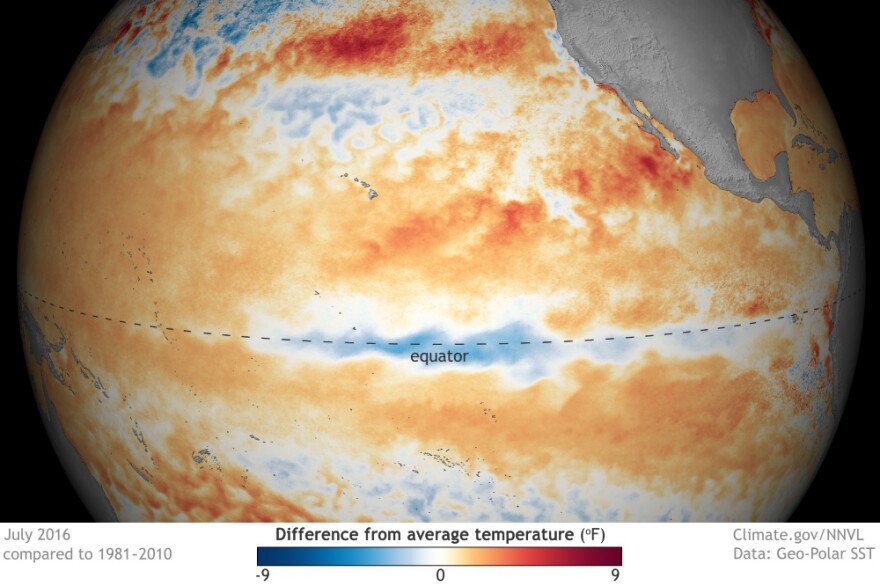Truth matters. Community matters. Your support makes both possible. LAist is one of the few places where news remains independent and free from political and corporate influence. Stand up for truth and for LAist. Make your year-end tax-deductible gift now.
This archival content was originally written for and published on KPCC.org. Keep in mind that links and images may no longer work — and references may be outdated.
Does the new La Niña forecast mean a dry winter for California?

According to a new forecast from the National Weather Service's Climate Prediction Center, it's likely that the La Niña weather pattern will show up this winter.
The likelihood that it will show up this winter is the same as last month: a 55 to 60 percent probability. That's a downgrade from June, when it was 75 percent.
While El Niño is associated with warmer waters in the equatorial Pacific and warm, wet winters in Southern California, La Niña can be tied to cooling waters, and is better known for keeping things drier in the southern part of the state.
But if the past year has proven anything, it's that nothing's for certain. The powerful El Niño was supposed to drench all of California. In the end, Northern California's drought was eased slightly, but southern California was left dry.
There is a presumption "that if we have La Niña that somehow that’s going to make the drought worse and it’s not entirely obvious that that’s actually the case," said Stanford climate scientist Daniel Swain.
Swain explained that it appears that La Niña could be fairly weak, opening up the possibility for normal rainfall in Southern California. But then again, the past few winters the region's rainfall has been lower than average even without La Niña around.
The National Weather Service's Climate Prediction Center will update its La Niña forecast next month.








